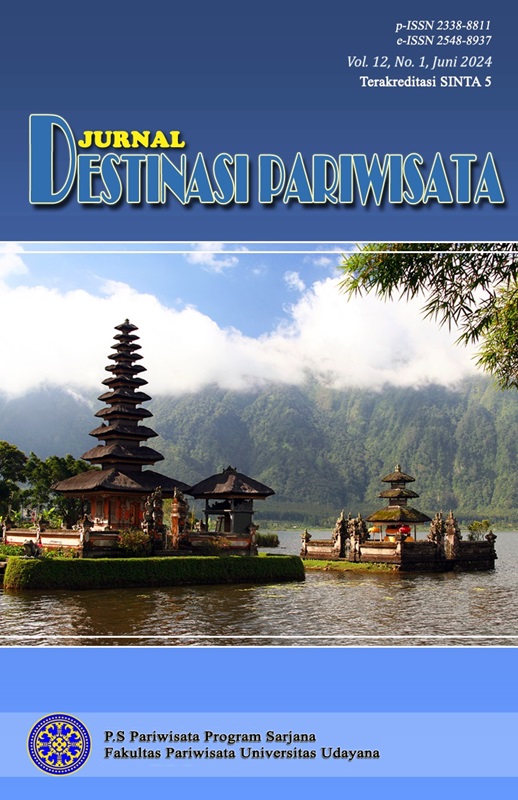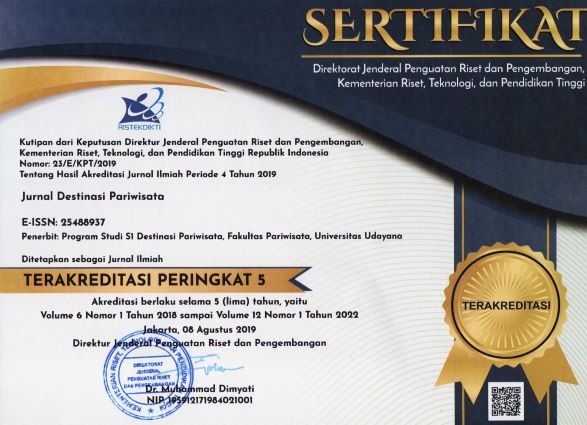Pengelolaan Daya Tarik Wisata Monkey Forest Berbasis Tri Hita Karana, Kabupaten Gianyar, Bali
Abstract
Tourist attraction has a relationship with the surrounding environment such as culture and the beauty of the environment, so it must have a balance like the Tri Hita Karana concept. In the concept of Tri Hita Karana emphasizes three human lives with the world which includes divinity, nature, and human relations. Monkey Forest is a tourist attraction that is closely related to the Tri Hita Karana cosmological concept, because Monkey Forest is a nature tour that contains spiritual, animal and human matters, so it is interested in discussing the management of tourist attractions based on Tri Hita Karana. This study uses qualitative data types. The data sources used are primary and secondary. Data collection techniques using observation, in-depth interviews, and literature study. Data analysis techniques use qualitative descriptive techniques in examining human status, an object, a condition, a system of thought or a class of tourism that will come. The results of this study provide a large positive impact on the surrounding environment, the economy, to heritage that is still maintained, and the impact of becoming a sustainable tourist attraction.
Keywords: Tri Hita Karana, Tourist Attraction, Sustainable Tourism, Monkey Forest
Downloads









